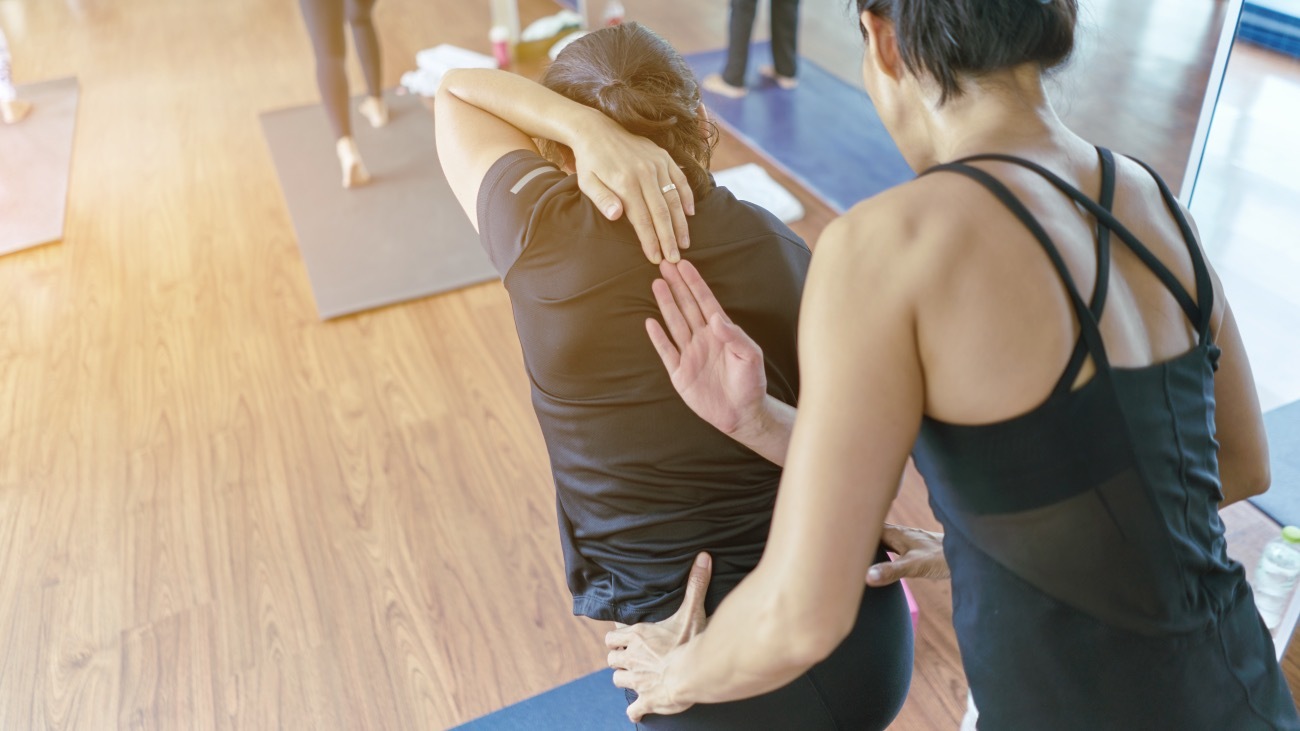Yoga Alliance Professionals

It seems strange to be writing an advice piece on how to return to teaching yoga classes in person. But after 4 months spent in lockdown, during which time the national dialogue has centred on the dangers of socialisation, leaving yoga classes to purely digital affairs, the notion of returning to the in-studio is strangely discomfiting.
Like so many seemingly “established” industries; retail, hospitality, and dating to name a few, the pandemic has transformed the landscape of yoga teaching. Hands-on adjustments are an obvious no-go area, whereas pre-booked, contactless payments are compulsory. Adapting and adhering to these changes is crucial for a safe, smooth reintroduction to the classroom. The following is a general guide to achieving this.
As Zoom-fatigue wipes the nation, the return to in-person yoga classes has been welcome announcement. However, as seems characteristic of every lockdown-easing, such excitement will likely be tempered by some anxiety for public wellbeing. It’s important to give your students the space to express these concerns, and offer them alternative options to heading indoors. Such options may include:
While some anxiety may be inevitable, informing your students of the safety measures put in place to keep the venue safe will help to assuage any concerns for returning to in-person classes. All class attendees should be made aware of all relevant protocols and the procedures that they are expected to follow in advance of the class, thereby engendering customer trust in returning to the studio, and facilitate a smooth transition to in-person classes.
In line with government guidelines, you should have developed Covid-specific procedures, additional safety measures and a risk assessment to begin teaching in-person classes indoors.(Read our guide to reopening yoga studios here!)
If, however, you are employed by a studio or company, you will need to confer with the business or venue owner to establish what policies are in place to protect their staff and students. You should be made aware of your responsibilities when teaching in the venue, and whether you will be required to carry out additional cleaning before or after class. This may vary depending on the venue or organisation. In some instances, you may be required to develop a unique risk assessment for your classes, in which case it will be necessary to keep this on your person. The government guidelines are a means to protect both you and your students during in-person classes. Understanding and adhering to these regulations will facilitate the transition to teaching indoors, and ultimately foster customer confidence in returning to your classes.
Your insurance policy with Yoga Alliance Professionals will also depend on you following these legal requirements.
Your behaviour in those first few classes back in the studio will set a precedent for your students. It is therefore essential to lead by example, following strict hygiene standards and government guidelines. While it may feel unfamiliar, you should not approach your students or accept late arrivals into the class. Following these rules will enable you to continue teaching in-person in the long term.
It’s likely your students will have developed some bad habits in lockdown. While Zoom meetings allowed for the continuation of yoga classes in quarantine, in the absence of a teacher alignments are likely to suffer and postures lose finesse. Given this, you may find some of your students have regressed and will need to go over previous areas of study to ease your students back into an in-person practice and more advanced postures.
As excessive breathing and sweating seem to increase the transmission of Covid-19, it is wise to avoid high intensive ashtanga or vinyasa sequences initially. Give your students, and yourself, the chance to settle in and adapt to the new teaching environment.
The transition to teaching in-person is a learning process and will require constant revision as the situation progresses. Identify what aspects work well and what you may need to adjust for your indoor classes. Speaking with your students, fellow teachers and the studio owner should provide you with the feedback to improve your class experience while minimising risk to all.
10 Beaverhall Road,
Edinburgh,
Scotland,
EH7 4JE
Copyright © 2025 Yoga Alliance Professionals Ltd. All Rights Reserved. Terms of Use | Privacy Policy
YOGA PROS ORGANISATION LIMITED, trading as YOGA ALLIANCE PROFESSIONALS, is a Not for Profit Scottish Company number SC502923
No Comments Yet
Let us know what you think